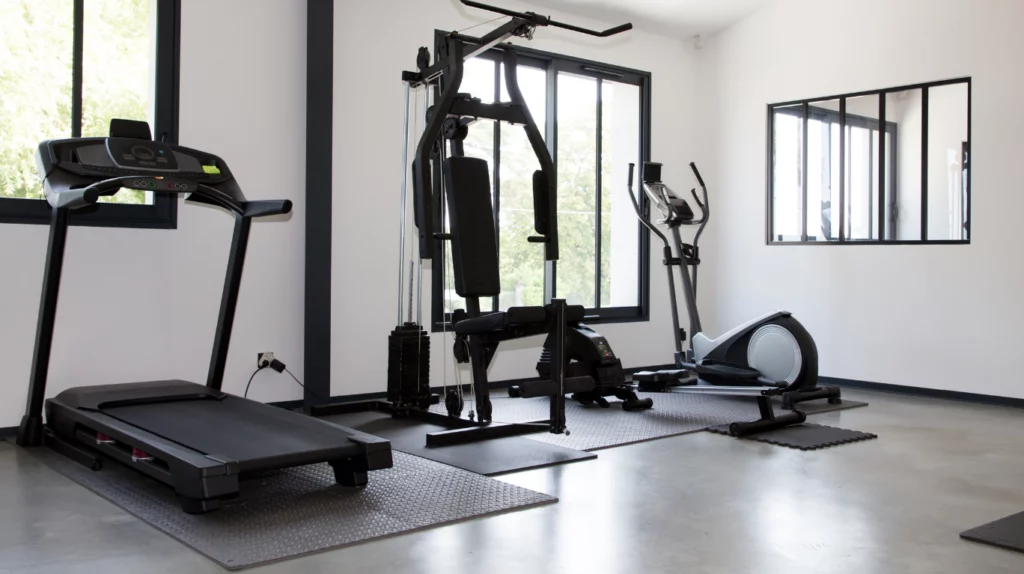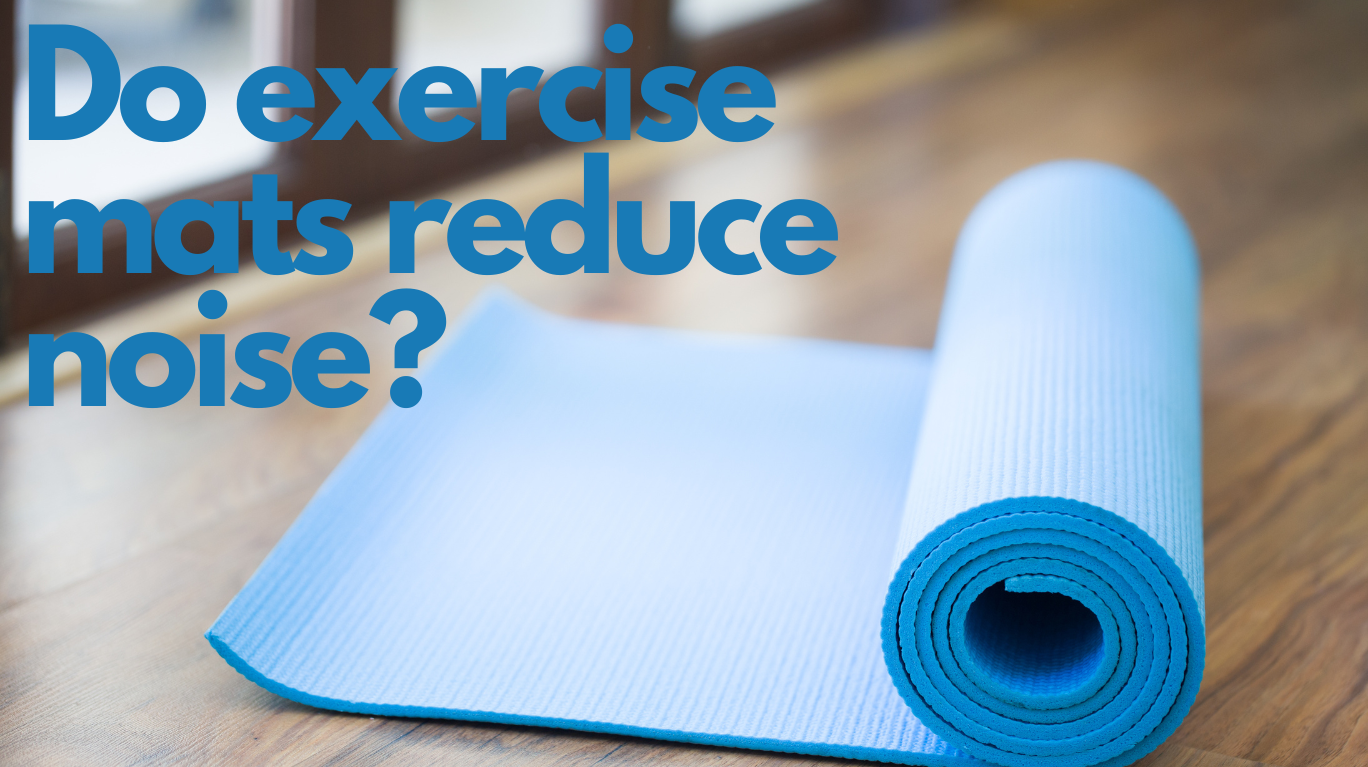Working out at home can be a great way to stay fit and healthy, but it can also be a source of noise and annoyance. If you’ve ever had to deal with complaints from your neighbors or family members about the sound of your exercise equipment, you might be wondering: Do exercise mats reduce noise? The answer is yes, they do.
However, not all exercise mats are the same. Some mats are thin and flimsy, and they do little to absorb the sound of your footsteps, jumps, or weights. Others are thick and durable, and they can effectively dampen the noise of your workouts.
In this article, we’ll tell you how to choose the best noise-reducing exercise mat for your home, and how to use it to minimize the noise of your workouts. Get ready to embark on your quiet journey towards an undisturbed workout experience.
Types of Noise Generated During Workouts
When you bring your workouts home, noise becomes an inevitable part. Noise is any unwanted sound that can be annoying or harmful to your ears. Three main types of noise during your everyday workout routine: impact noise, vibration noise, and airborne noise.
1. Impact Noise
Impact noise, also known as structure-borne noise, occurs when heavy exercise equipment hits the ground, such as when you drop dumbbells or jump during high-intensity interval training (HIIT) workouts.
2. Vibration Noise
Vibration noise results when repeated motions, such as the continuous operation of the treadmill or elliptical trainers, create a shaking effect. These vibrations can disturb the household items hanging on the walls and even the structure of your house.
3. Airborne Noise
Lastly, airborne noise is the typical sound we hear transmitted through the air. High-volume music, shouts, and grunts during an intense workout or the clanking of metallic weights are all examples of this type of noise.
How Does Noise Produce During Workouts Impact You and Your Neighbors
Noise disruption during workouts can be vexing, not just for you, but for your household or neighbors as well.
A noisy setting can disrupt your workout routine and reduce your ability to focus on your exercise. Plus, the lack of serenity might make the experience less enjoyable. This thereby impacts your motivation to stick with your fitness regime.
Moreover, the noise from your workouts might disturb others in your household or even your neighbors. It can interfere with their sleep, work, and study, and cause them to complain or resent you. This disturbance could strain relationships and may increase your anxiety level during workouts.
These scenarios underline the necessity for a noise-reduction solution that allows you to keep up with your fitness goals while maintaining a peaceful home environment. One of the most effective and affordable solutions is to use exercise mats. Do exercise mats dampen noise? Let’s explore.
How Do Exercise Mats Reduce Noise?
Exercise mats are thick pads that you place on the floor under your exercise equipment or yourself when you work out. They are usually made of rubber, foam, PVC, or other materials that have sound-absorbing properties. Here’s how exercise mats reduce noise:
- Sound Absorption: Sound waves are vibrations of air molecules that carry energy and information. Just like light, sound waves also bounce off and get absorbed or transmitted by different surfaces. Exercise mats absorb sound waves by converting their energy into heat or motion within their material. This reduces the intensity and volume of the sound waves and prevents them from reverberating in the room.
- Impact Noise Reduction: Exercise mats provide a softer landing surface for equipment or your body. This reduces the force and loudness of the impact and prevents it from creating vibrations that travel through the floor or walls.
- Vibration Isolation: When used under fitness machinery like a treadmill, mats can help minimize the transmission of vibration to the floor and the rest of the house.
For example, while doing a HIIT workout, your jumps could create loud sounds. Using a thick exercise mat could help reduce the impact noise significantly, making your workout quieter and more enjoyable for everybody.
Factors Influencing Noise Reduction
The effectiveness of an exercise mat in noise reduction is influenced by several variables. Here are all the essential factors to consider:
1. Type of Exercise Mat
Different exercise mats have different materials, designs, and qualities that affect their sound-absorbing properties. For example, rubber mats are better at reducing impact and vibration noise than foam mats, while foam mats are better at absorbing airborne noise than rubber mats. You should choose an exercise mat that suits your workout needs and preferences.
2. Thickness and Density
The thicker and denser the exercise mat, the more sound waves it can absorb and the more vibrations it can isolate. However, thicker and denser mats may also be heavier, bulkier, and more expensive than thinner and lighter mats. However, striking a balance between comfort and noise reduction is also important.
3. Floor Surface
The type of floor surface you have can also affect the noise level of your workouts. Harder floor surfaces like wood or tile can reflect more sound waves and transmit more vibrations than soft surfaces like carpet or vinyl. You should use a thicker and denser exercise mat if you have a hard floor surface to reduce the noise.
Benefits of Using Exercise Mats for Noise Reduction
Noise-reducing exercise mats provide benefits that extend beyond merely reducing the sound of your workouts:

Comfort
A quiet workout environment can enhance your comfort during exercises, improve focus, and make your workouts more efficient.
Safety
Exercise mats provide cushioning that reduces the impact on your joints during high-intensity workouts. This can prevent injuries and pain in your knees, ankles, hips, back, and other parts of your body.
Low Disturbance
With decreased workout noise, you become a less disruptive home athlete. This ensures peaceful cohabitation.
Floor Protection
Beyond noise reduction, mats also protect your floors from getting scratched or damaged by heavy workout equipment.
Versatility
Exercise mats are versatile and can be used for a variety of workouts, including yoga, Pilates, and weightlifting. This means that they can provide noise reduction benefits for a wide range of fitness activities.
Cost Saving
Using exercise mats as a solution to reduce workout noise is substantially cheaper than other soundproofing alternatives. Plus, it requires less time and effort to install.
How to Use Exercise Mats Effectively For Noise Reduction?
To use exercise mats effectively for noise reduction, you should follow these tips:
- Selecting the Right Exercise Mat
Making the most out of your exercise mats starts with choosing the right one. Factors like thickness, material, and intended use come into play.
Consider the specific type of exercise you engage in and select a mat that suits your needs accordingly.
- Proper Placement and Usage
Once you choose the right mat, it’s crucial to ensure proper usage for maximizing noise reduction. If you’re using heavy workout equipment, it’s advisable to place the mat under the machine. For floor exercises, ensure the mat is fully under your workout area before commencing.
- Additional Noise-Dampening Measures
You should complement your exercise mat with other noise-dampening measures to further reduce the noise from your workouts.
For example, you can wear headphones or ear-buds instead of playing music out loud, adjust the volume or speed of your equipment if possible, avoid dropping or clanging weights or other objects on the floor, schedule your workouts during less sensitive hours, or communicate with your neighbors about your workout plans.
Conclusion
Do exercise mats reduce noise? Yes, indeed. They not only absorb and reduce the transmission of sound waves but also bring a range of other benefits, enhancing the comfort of your workout, safeguarding your floors and equipment, and minimizing disruption to others – a trifecta of benefits hard to overlook.
Invest in noise-reducing exercise mats to experience a redefinition of peaceful workouts. They can be a simple and cost-effective solution for those who wish to contribute to quieter living spaces while staying committed to their fitness routine. Remember, the right mat used correctly can help you enjoy your fitness regime like never before!
Common Queries
Which type of exercise mat is effective at sound absorption?
High-density foam or rubber mats are effective at sound absorption. They provide a thick, dense barrier that interrupts and absorbs sound waves, hence reducing the overall noise.
How can foam mats help with noise reduction?
Foam mats work by absorbing sound waves that hit them, reducing the intensity of the sound. Moreover, they provide a soft landing for equipment, reducing the loud noises caused by impact.
Can yoga mats effectively absorb sound?
Yoga mats can mildly absorb some noise due to their material, they are not specially designed for sound absorption. They are usually thinner and less dense than mats designed for sound absorption.
What are some other ways to reduce noise during home workouts?
Using noise-reducing exercise mats or placing regular exercise mats underneath your workout equipment can help reduce noise. You can also moderate the volume of your music and pick low-impact exercises.
Which one is more suitable for noise reduction: rubber or foam?
Both rubber and foam can be effective for noise reduction, but high-density foam mats often provide better sound absorption due to their more porous nature, which allows for better sound wave absorption. However, rubber mats can also be effective, especially for vibration noises.

